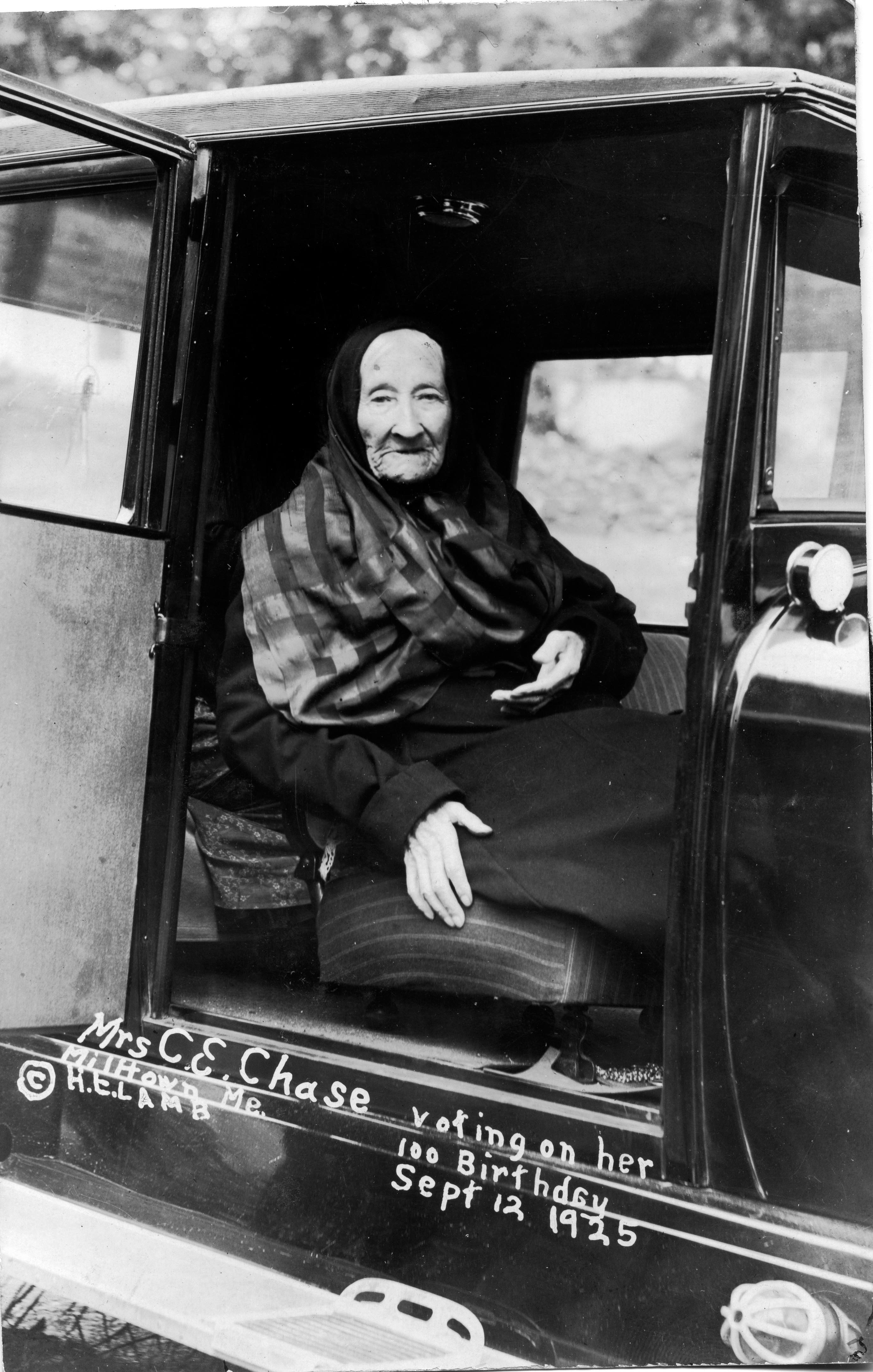It is fair to say that the year 1925 generated few newsworthy events either in the world generally or the United States. Military conflicts and political coups were rare, so rare in fact that “Pink’s War” during which the British Royal Air Force ineffectively dropped a few bombs on some unruly natives in Waziristan is listed as one of the top five conflicts of 1925. Hitler, while jailed with his confederates in Germany, did manage to write Mein Kampf, the racist screed which became the Nazis foundational doctrine. Perhaps the most significant event of 1925 was the demonstration by John Baird of Scotland in Selfridges Department Store in London of his “Televisor” which eventually became the television.
In the United States the deadliest tornadoes in U.S. history rampaged through the Midwest killing 685 people and injuring 2027, Charlie Chaplin’s “Gold Rush” was released, and Babe Ruth went on such a bender that he was hospitalized, benched, suspended and fined by manager Miller Huggins.
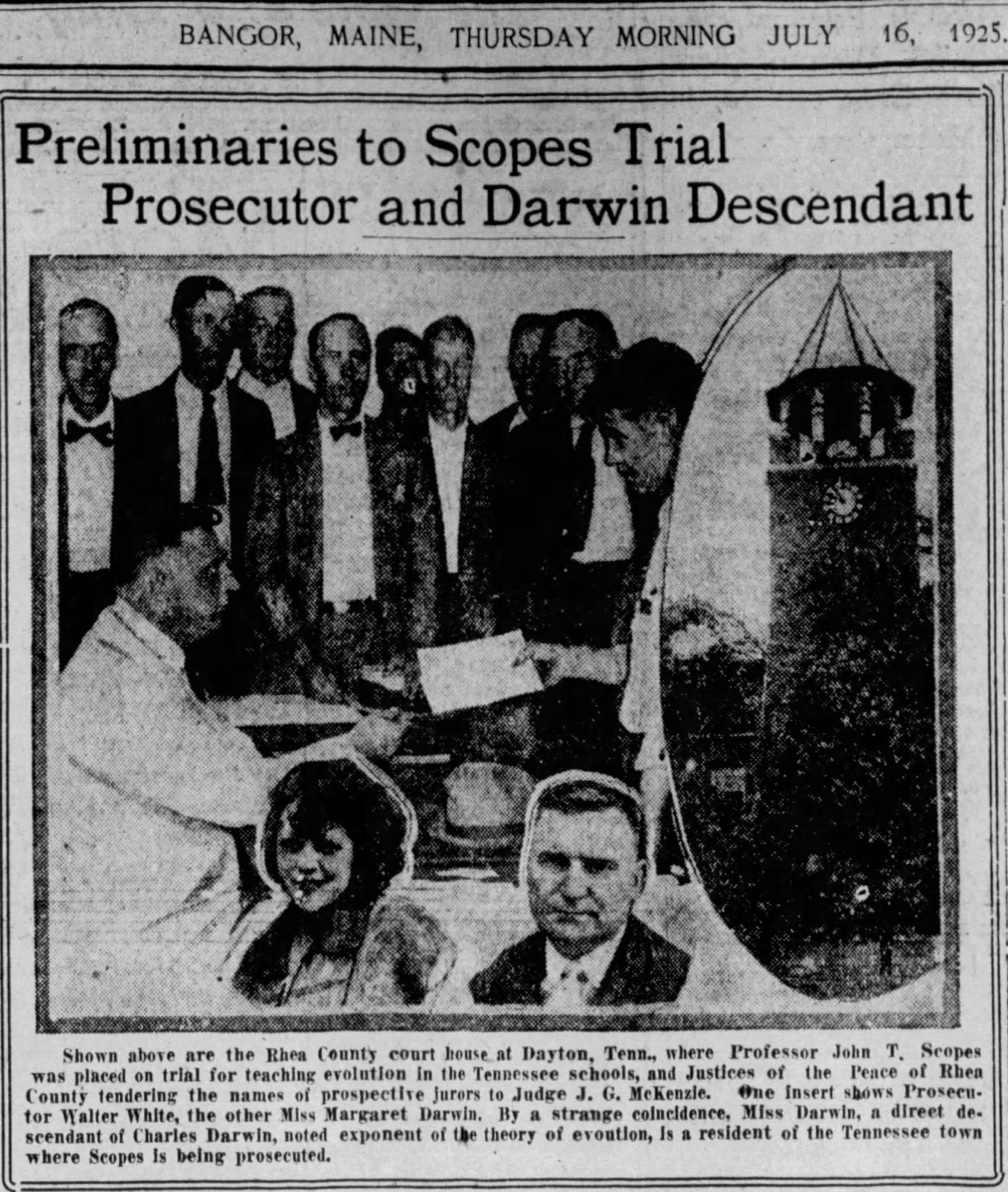
The Scopes Trial in 1925 was a national and international sensation
The big news nationally in 1925 was what became known as the Scopes Monkey Trial. Tennessee had recently passed a law banning the teaching of evolution in its schools and a teacher, John Scopes, defied the authorities by openly instructing his science class on the theory. When Scopes was arrested and charged battle was joined between two of the most eminent lawyers of the day, William Jennings Bryan for Tennessee and Clarence Darrow for the defendant John Scopes in the small Tennessee town of Dayton Tennessee in which lived, by remarkable coincidence, a direct descendant of Charles Darwin, the exponent of the theory.
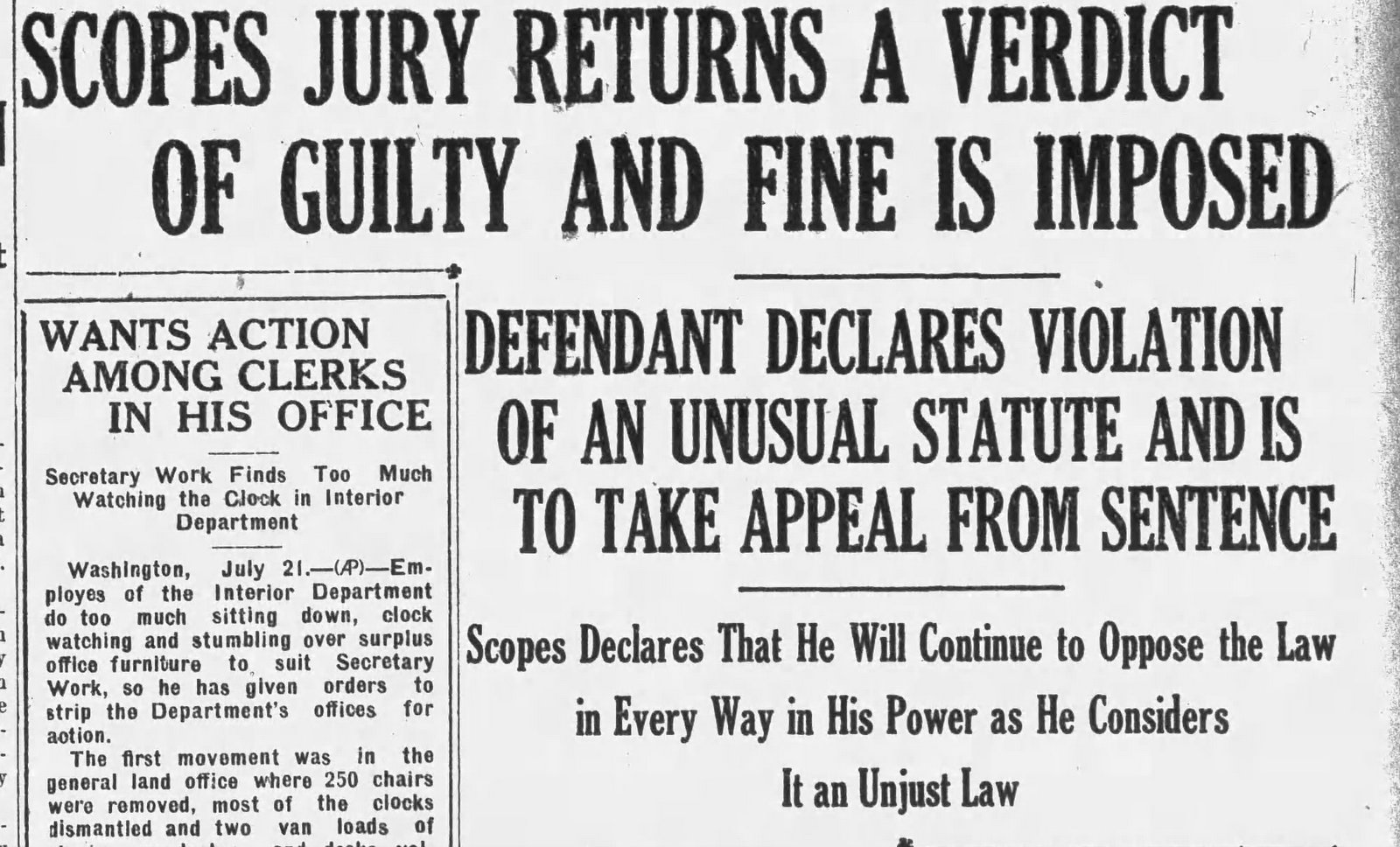
Bath Maine Times July 21, 1925
Scopes was, of course, convicted. The judge refused to allow Darrow to introduce any scientific evidence to support the theory of evolution and the jury consisted of twelve farmers of a very conservative religious bent. The trial was a sensation nationally and locally. A search of Maine newspapers in 1925 for references to the trial returns 1603 articles although many are duplicates. The movie “Inherit the Wind” (1960) recreating the trial is one of the most popular film productions in movie history.
The trial’s most lasting effect was renewed interest in the theory of evolution. As the Kennebec Journal noted in 1926:
If anyone has any doubt that an effort to suppress speech or censor reading does stimulate curiosity respecting that which is tabooed, perhaps they will try to explain why in the State of Tennessee more books on evolution have been sold since the Scopes trial than in all the preceding years of this century.
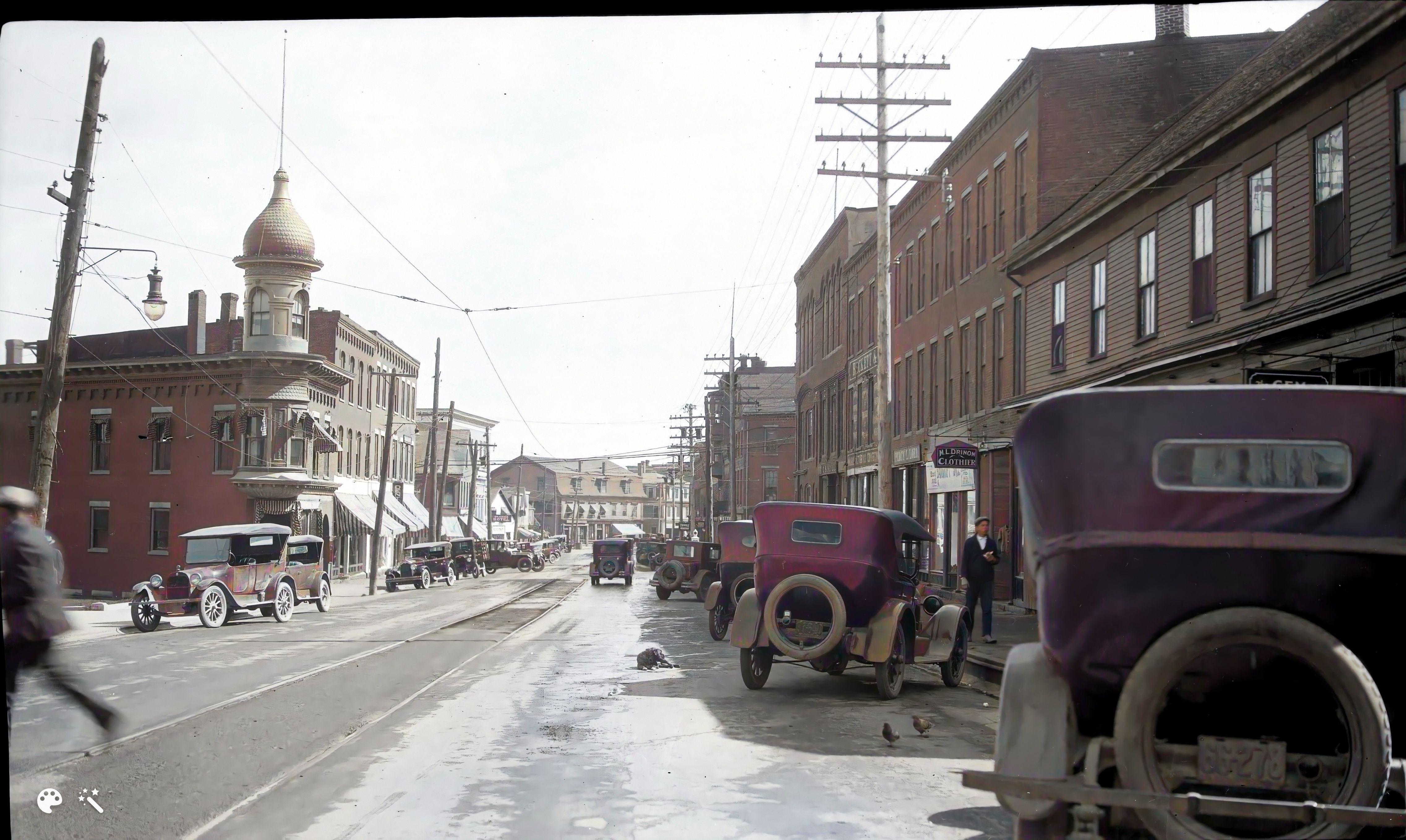
Calais 1925 Calais Federal, now Camden Bank, to the left. Dog sound asleep center waiting for master.
Calais in 1925 was about twice the size the city is today, having 5500 residents. Baileyville had 2000 residents, Princeton 950, Eastport 4000 and St. Stephen-Milltown N.B. 6000.
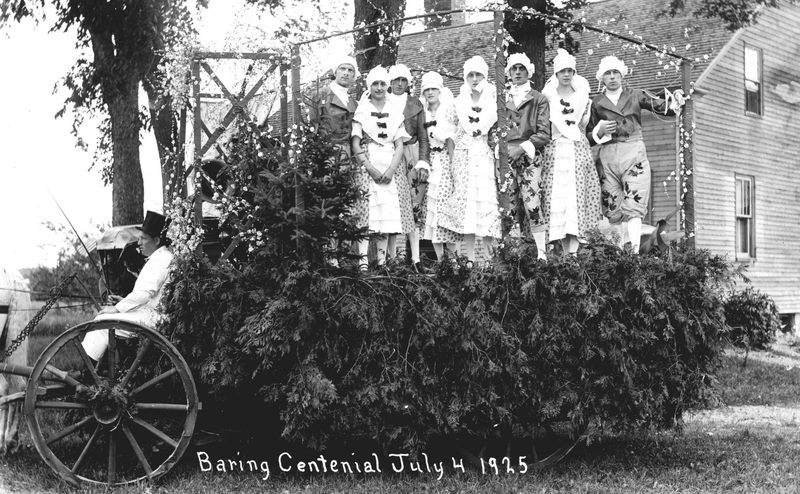
Baring’s population was 200 but it was the most exciting town in the St, Croix Valley in the summer of 1925 as Baring celebrated its centennial. Dignitaries including the Governor attend the festivities. According to Clifford Chase, the town’s historian:
“The history of Baring really began in 1793 when the General Court of Massachusetts sold townships No. 5 and No. 6 to William Bingham of Philadelphia. Bingham went to England to look after the titles of the lands which had been granted by George III. While there he fell ill and died. His daughter, who had accompanied him, married Alexander Baring, son of the famous London banker, and they returned to America to look after her father’s property. Tradition holds that they came to Baring and erected what was known as “The Big House on the Hill”. It is to be regretted that this, the first house built in Baring, was destroyed by fire in 1922. While living there he received word that he had fallen heir to a title in England and left hurriedly for St. John where he took passage on a sailing vessel. Before leaving, however, he leased his land holdings in Baring to William Vance, and Vance later bought a large part of the leased territory.”
Vance was a man of extremely flexible loyalties- when just 16 he enlisted in the Continental Army to fight the British as a substitute for his brother who had been wounded at Bunker Hill. He fought at Bemis Heights and Saratoga but after the war moved to New Brunswick, receiving a grant on St David’s Ridge near St Stephen from the British government. He practiced law in St Andrews, was a Justice of the Peace in New Brunswick and otherwise a loyal British subject until his more profitable business interests in the States persuaded him to switch sides again and move to Baring. He later moved to Upper Mills opposite Baring and, as noted above, leased and subsequently bought the land from Lord Baring which was then called “Vance’s Mill” and is now the town of Baring. During the War of 1812 he mounted a cannon on his Baring property and threatened to bombard his former countrymen and neighbors should they take any military action against his interests. On a personal level he was married 5 times at least once without observing the niceties of divorcing his prior wife. James S Pike, a contemporary who knew him well, penned his recollections of the notorious “Old Vance”. He was called “Old Vance” by Pike at the time to distinguish himself from his son William Vance who was hanged as a pirate.
We are fortunate to have this firsthand description of the St. Croix Valley’s most interesting characters, some would say infamous scoundrel, by Calais’ most famous son, John Shepherd Pike, author and Abraham Lincoln’s ambassador to the Hague during the Civil War. While only tangentially related to 1925 we can not resist including Pike’s description of “Old Vance.”
James Pike on William Vance:
“Old Vance” Of Baring
By James Shepherd Pike
N. H. Lamb, Amanuensis
William Vance of “No. 6” or Vance mills, now Baring, commonly known as “Old Vance.”
He was a very striking character. He was wholly without education. I never heard of his reading. His writing was a near scrawl. Yet he played the part of a lawyer before the Courts of those early days and was constantly a speaking member of the State Legislature.
His vivacity was great and his power of repartee so well known that everybody dreaded him as an antagonist. He was the representative of the rude democracy of the country, with whom he was hail fellow, well met and always had a joke or a story or a sarcasm for them.
The slender conservatism of the outskirts of civilization in which he lived was always opposed to him but could never make any headway in keeping him out of the legislature or in any way suppressing him. I can see him now, old and gray, flitting lively about, his false teeth shaking as if ready to drop out of his mouth, and the old man in constant mumble between a laugh and a joke, nervous, belligerent, and sparkling with rough and ready wit or impudence.
His reputation for truth and integrity was largely below par and his habits with women were notorious for their looseness. He was married several times and when I was a lad he had been long living with a woman to whom he was not married and by whom he had several children and whom he always styled “Lottie Dear.”
At this time, he had a wife from whom be had been divorced, living. His older children subsequently got him to marry “Lottie Dear” but afterwards detecting in her some (infidelity?) he got a divorce and married another woman in the town of Readfield whither he had gone to live in his old age and very soon was involved in a suit with her, also for a divorce.
It was made a very amusing trial and his counsel was Paley Sprague, a very eminent lawyer, afterwards and now (1863) Judge of the Circuit Court of the United States in Boston. When I saw Lord Palmaston last month it struck me that in many respects he and “Old Vance” were by nature much alike. The “ha ha” and “Gad dear” of Vance, and the “ho ho” of Palmaston, each following some humorous suggestion, were quite similar.
As a lawyer Old Vance made ludicrous mistakes and stumbled along easy and anyhow, but his audacity and native parts always took him through.
He was once attacking a law and styled it an “Ispo facto” instead of an ex post facto law at which judge and lawyer burst out in a laugh. “Gad dear” I may not be quite right for am not much of a lawyer in my Latin, but I think it is quite good enough for the place.
Old Vance was a holder of a large property in the wild lands and mill at Baring. He was an agent for the Bingham lands on the St. Croix under John Black of Ellsworth, so long their general agent, but very loose agent. The brothers Richard, Henry and Francis came to file proof of agents about the year 1828 or 7 and bought him out and he soon after removed to Readfield. He had, at the time he sold, a great three-story house on the long narrow ridge at Baring facing the English side of the river. During the war of 1812 he planted a cannon on the end of the ridge which then abutted on the river, and christened it “Mount Defiance.” This was after he had lived in the Province and taken the oath of allegiance in order that he might practice law in the English courts. But to a man on the make, taking an oath of allegiance and to such circumstances was no more than taking a custom house oath by a smuggler.
I should have reminded that when “Old Vance” was in the Legislature he came into collision with “John Holmes,” one of the ablest men in the State and who held various offices in the gift of the people, among them that of United States Senator. It was education and talents on one side against man’s native ability on the other both being noted blackguards. It was conceded that “Old Vance” lost nothing by the encounter.
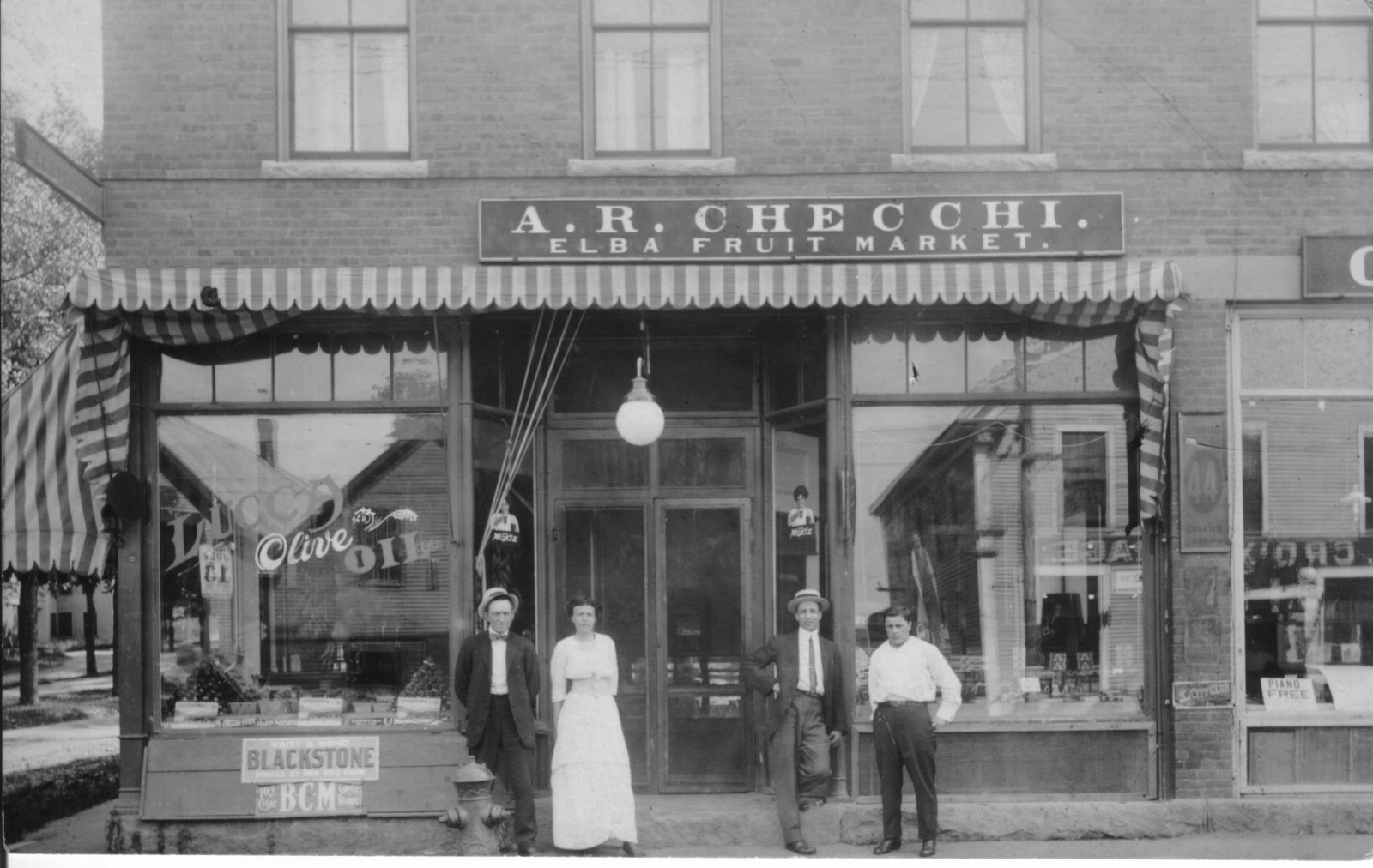
There were a number of tragedies in the Valley in 1925. One was the suicide of Antonio Checchi, one of the owners of Checchi’s Store at the bottom of Calais Avenue. We believe he is one of the men in the photo above. The St. Croix Courier reported his death:
1925 St. Croix Courier:
A familiar figure is absent this week from “around the corner” and will long be missed by his host of friends. That is Antonio V. Checchi—the ever smiling and popular “Tony” as all knew him.
His departure was entirely of his own choice and carefully executed. He had used a length of his garden hose, connected it with a gas jet on the ground floor and, with labor that must have taken some time, carried it upstairs and through an inside window to his lonely bedroom.
All openings had been carefully “chinked” and the gas turned on. Then he ascended again to his room, lay down upon his bed and awaited death. Near his body was an envelope addressed to his brother and containing $27 towards his burial expenses and a weirdly worded note in Tony’s handwriting but signed “Spirit of the Wind.”
Another suicide which received national coverage was that of Katheryn Young, the 19-year-old wife of the New York millionaire William C. Young. Married six months the reports indicate William was a bit of a philanderer and when, after a night on the town, Katheryn discovered evidence he had been with another woman she shot herself. The District Attorney, Harold Murchie of Calais was suspicious, intended to demand an autopsy and means “to push it to the end”. Unfortunately, the body had already been taken to New Jersey for burial and Mr. Young was reportedly in Texas.
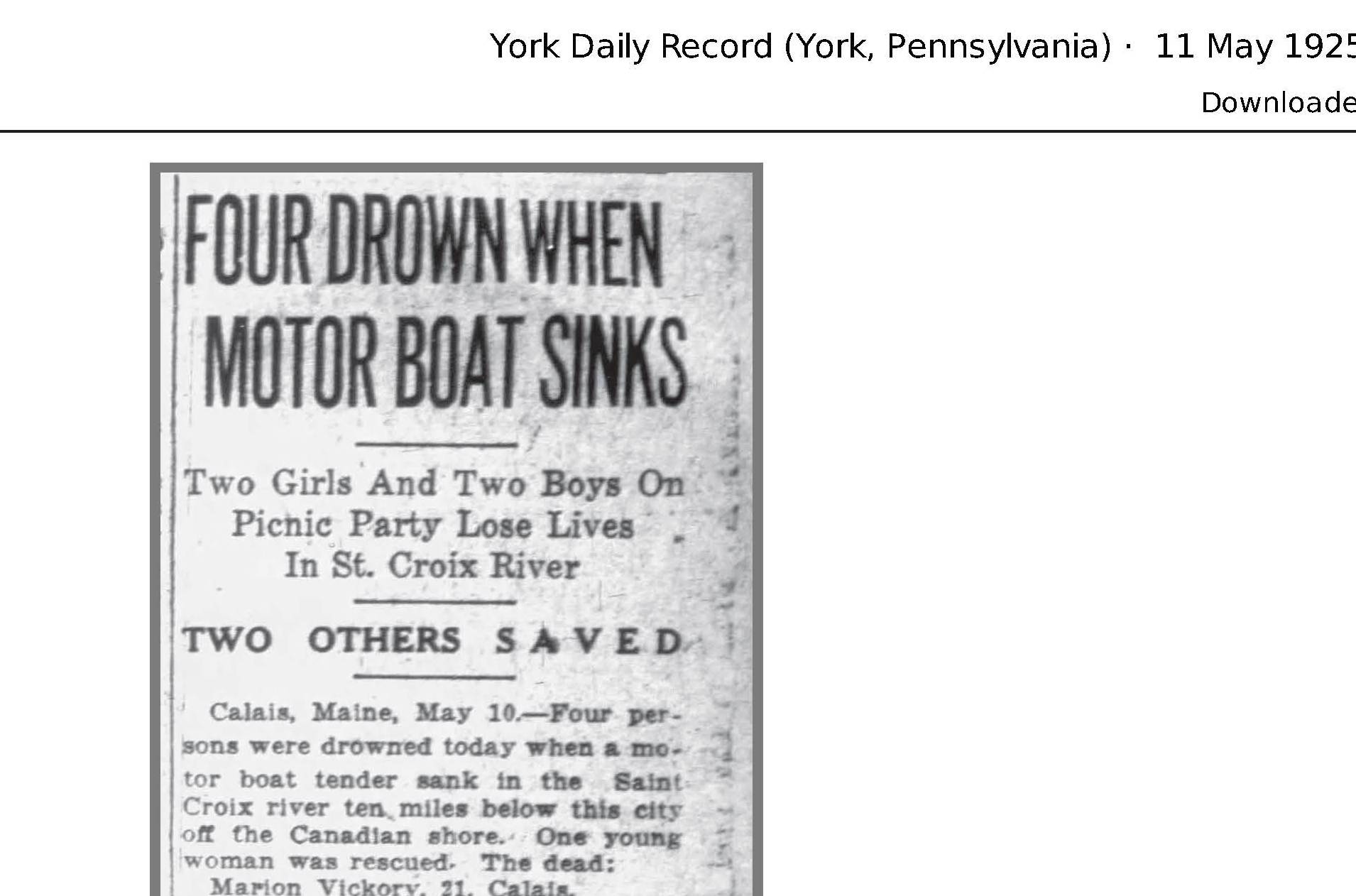
The most tragic event locally in 1925 was the drowning of four young people from Calais and St. Stephen-an event which was reported throughout the country.
The St. Croix Courier describes the tragedy:
Four Young People Drowned at Oak Bay
St. Stephen and Calais were thrown suddenly into deep mourning Sunday afternoon by the drowning off Oak Point, at the junction of the St. Croix River and Oak Bay of four young people of the two towns, two young women and two young men, all well-known and of good repute.
The victims were: Miss Marion Vickery, 21, daughter of Frank Vickery of Calais; Helen Kyle, 17, daughter of Mr. and Mrs. Alexander Kyle of Calais; Murray McKay, 16, son of Mr. and Mrs. George McKay of St. Stephen, and George Stevens, 18, of St. Stephen.
Virginia Vickery, 19, was saved by Captain Cooney’s crew from a four masted schooner anchored near the scene and was rushed to Chipman hospital where she was in a serious condition but is recovering. Granville Craft, son of Mr. and Mrs. Jas. Craft of St. Stephen, swam ashore. He probably saved his life by getting his sweater off as soon as he struck the water. All could swim and it is thought heavy clothing drew them under. They had started out on Sunday noon from St. Stephen in a motorboat owned by Craft and Stevens. When opposite Oak Point, they were attempting to make a landing in a small tender which they had brought with them, when it started to leak, and, in the excitement that followed, all were thrown into the water.
In an odd case of possible murder, the body of Abraham Gallop of Quebec was exhumed and traces of poison found in his stomach. His wife, formerly Emily Sprague of Charlotte, Maine, was apprehended in Moncton and charged with murder. Folks in Charlotte denied anyone named Emily Sprague ever lived in Charlotte. No further reports were found on the case.
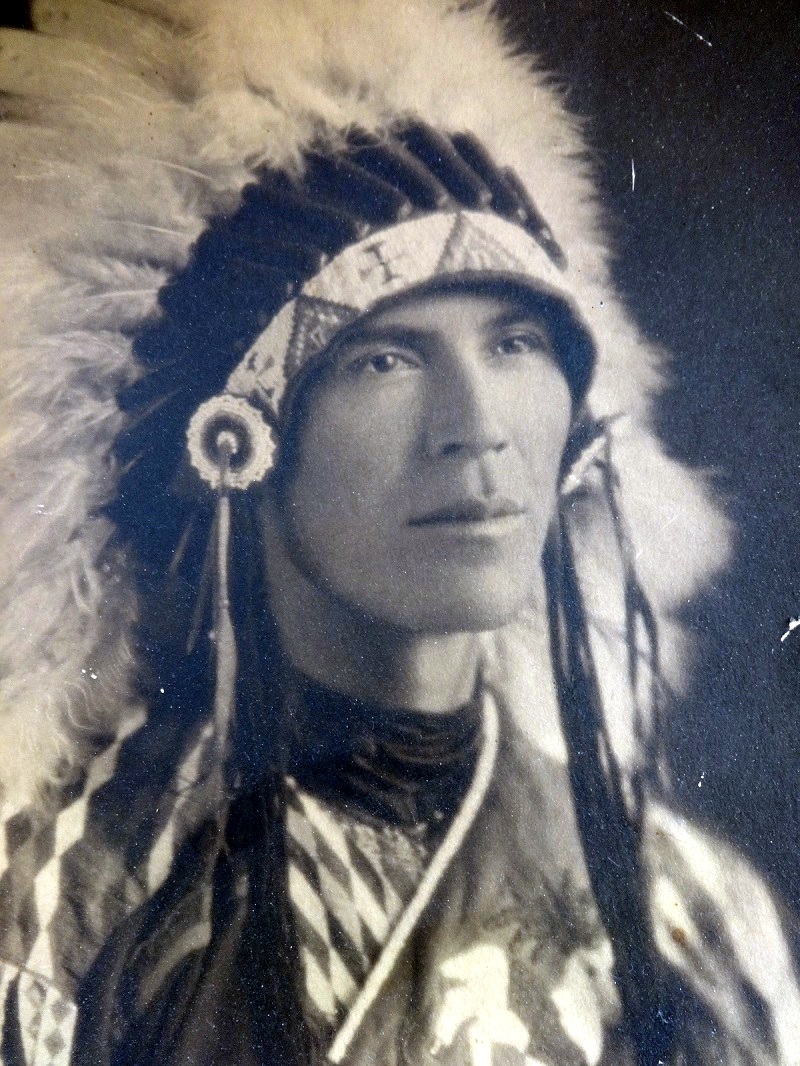
At Pleasant Point Joseph Nicholas became the Tribal Chief and served as chief from 1925-1930, 1935-1938 and 1941-1948. In February 1925 the Waterville Morning Sentinel warned “palefaces” to be careful when they “step on the gas” in the reservation as the Tribe was fed up with summer visitors speeding through the reservation and had established a speed limit for automobiles.
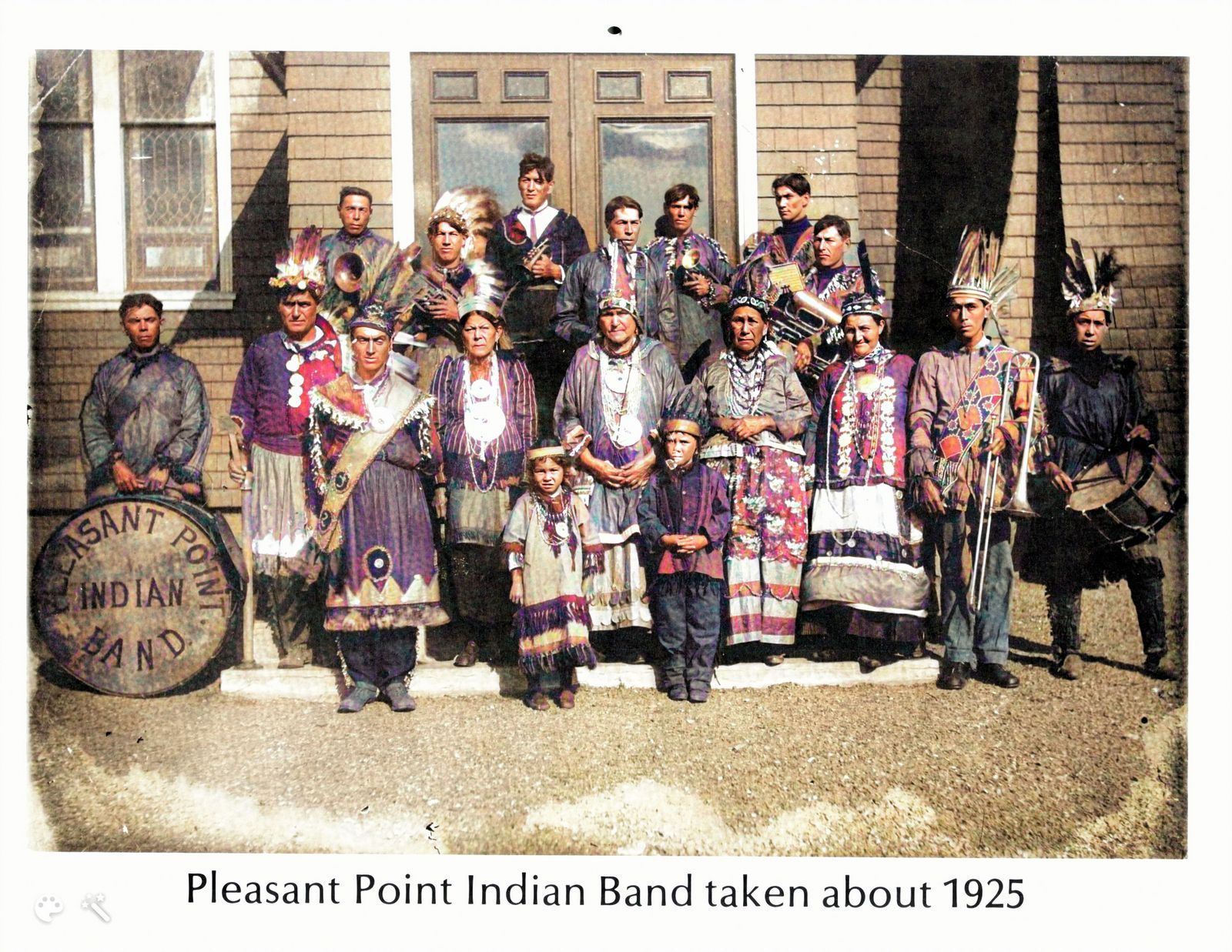
The Pleasant Point Indian Band was reported by the Kennebec Journal in November 1925 to have been abandoned in Connecticut by its white promoter who under the contract was required to provide the band train fare back to the reservation. Money was raised locally, and the band returned home.
On March 3, 1925, Woodland experienced an earthquake.
From the Bangor Daily:
“On one occasion a Sparrow was lured from his nest and blown upon a shop window for a short time period and in one of the local pool rooms the spectators restricted with terror as they watched the balls roll to one end of the table. In the Saint Croix mill the piles of groundwood were shaken over much to the disgust of the workers.”
In an article reported throughout the country Sadie Walsh of Pembroke claimed to be a world Champion cyclist. From the Butte Montana Daily Post:
“the keeper of a little store here says she still is the world’s bicycle endurance champion. She once rode 500 miles in 59 hours.”
Finally, some other items of interest from 1925:
Going to the American Consulate in a foreign country can be a daunting affair these days. Not so in 1925-there was a U.S. Consulate on Water Street in St. Stephen. Frederick Mitchell of Calais was appointed Vice-Consul to American Consulate in St. Stephen on June 13, 1925.
In 1925 Customs officers on both sides cracked down on the practice of simply waving to Customs Officers rather than coming to a stop.
From the St. Croix Courier
Every car must stop.
The U.S. Customs officers have been instructed to report all violations of the law requiring the driver of every vehicle entering the United States to report. In order to comply with the law, all such drivers are warned that they must come to a full stop, report to customs and not to proceed until they receive permission from the officer. Failure to observe these instructions will subject the offender to a penalty of $100.00.
From Canadian customs in response:
The same here
The Collector of Customs at St. Stephen writes: I noticed in your paper a few weeks ago a reference to the Customs regulations now being enforced in Calais, re vehicle and people crossing the bridges on foot. I wish to state that similar regulations exist at Canadian Customs and Excise offices. Persons in vehicles and on foot are supposed to stop and report and not wait for the officers to stop them, as they seem to think at the present time.
The above did not address the 1925 notice on December 19, 1925 that the ice bridge between Milltown Maine and the Cotton Mill in Milltown N.B. was closed because the ice was too thin “the danger signal having been hoisted by James Dewar, who is in charge of keeping the ice clear along the edge of the big dam” Hundreds of Americans walked across the St Croix over the ice to work at the Cotton Mill in Milltown N.B. every day and back again after their shifts without even the need to wave to the friendly Customs Officer.
